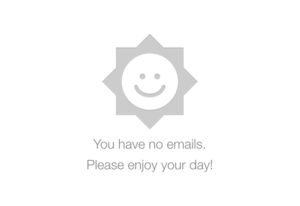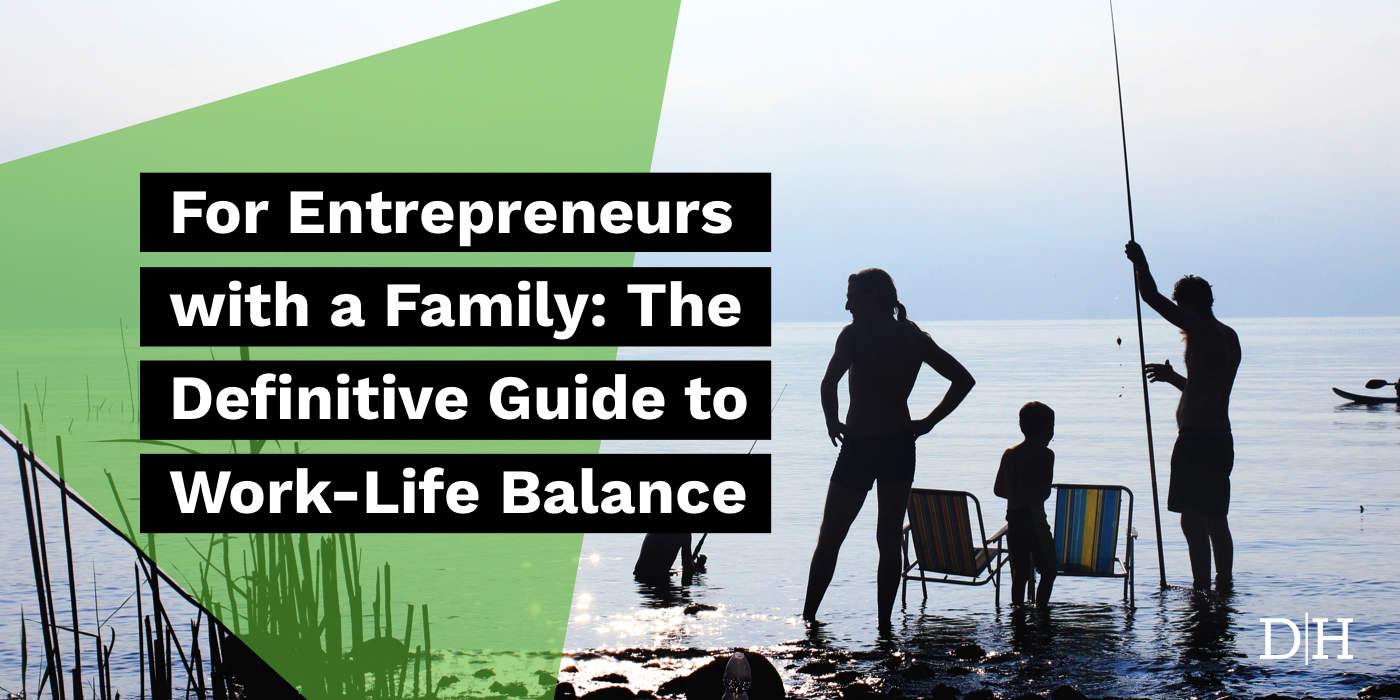As an entrepreneur, you have a lot on your mind every minute of every day. Throw a family into the mix, and it’s easy to feel overwhelmed. Sounds familiar? I’ve been there.
Building a large tech business, juggling family life, and then celebrating the birth of my daughter three years ago, I struggled with these same issues. Balance isn’t easy. It’s not something that ‘just happens’. I read books and blogs, watched countless videos, and finally stumbled upon a new idea— why don’t I approach my life the same way I do my business?
The same principles that made Steve Jobs, Warren Buffett, and Bill Gates successful in business could help me get a handle on my personal life. The same time management skills and productivity hacks I’ve learned building companies could potentially work wonders at home.
In this guide, I’ll share some of the business lessons I’ve learned to apply outside of the office. Lessons that have helped me be a better father and husband. As you read through my experiences, think about different business practices you currently use in your own life and how you might tweak them so they work at home.
Ready to get started? One quick thought before we begin…
Work-life Balance is a Myth (and here’s why I’ll never use that term again).

There, I said it. If you get nothing from this guide, let it be that the entire concept of work-life balance is misleading— and has been for years!
Best-selling author Matthew Kelly, in his short paperback Off Balance, describes the idea as something we “don’t really need or want.”
“As an idea, balance sounds desirable, but before we started discussing work-life balance I am not sure there was any great epidemic of people lying awake at night thinking to themselves, “I need balance. I want balance. Balance is the solution to all my problems.”… what [people] want has very little to do with balance.”
And he’s right— work isn’t something that should exist outside of ‘life’. Work is part of life, especially if you’re at a point in your entrepreneurial career where you’ve truly found your vocation (and not just working for a paycheck). Instead of trying to spend a certain percentage of time on work and another percentage on life, try viewing your work as simply a single piece of the whole. So instead of chasing “work-life balance”, instead view the entire pursuit as, “work-life integration”.
How? Good question. In this guide, you’ll get the tools you need to begin building a more balanced life. By the time you’re done, you should be on the road to creating a system that works for you, your partner, and your family. After all, a family truly is a system. Like a business, families are interdependent networks with moving parts, different competing priorities, and multiple stakeholders.
And, just like a business, your family is another area in life that requires active management. To help it run smoothly, I’ll share tools, processes, and project management philosophies you can use to run your family life as successfully as you run your business.
Contents
- PART 1 – VISION
-
- Define Your Why
- Work Together
- PART 2 – SCHEDULING, BOUNDARIES, AND LEARNING TO SAY NO
-
- Focused, Quality Attention
- Setting Clear Boundaries
- Eliminate What You Hate
- PART 3 – TOOLS, TACTICS, AND ROUTINES
-
- Software
- Techniques and Routines
- THE KEY INGREDIENT: CONSISTENCY
Part 1 – Vision
Before we get into the second part of this guide and talk about planning, scheduling, and setting boundaries it’s important to stop and think about what makes you tick. What’s important to you? What drives you? What are you truly living for?
And perhaps most importantly… why?
Define your why
It’s a video that we’ve all seen several times. I’m talking about the world-famous—at least in the entrepreneur community—TED talk by Simon Sinek, author of Start With Why.
If you haven’t seen it, stop reading and give this video your full attention:
Knowing “your why” is a concept that has embedded itself within the entrepreneur community and doesn’t appear to be going away anytime soon. The reason is simple: it works. It gets everyone on the same page whether they’re stakeholders, customers, suppliers, or new leads. By having a clear purpose, you set off a chain reaction of proactive action towards your goals.
Here’s a lesser-known video from Simon Sinek that explains the chain reaction that occurs once you start living (and sharing) your why:
By understanding your purpose and getting everyone on the same page, decisions can be made without you. Not just any decisions, but the exact same decisions you would have made had you been in the room while they were being deliberated. You’ve essentially embued your guiding passion and drive into your employees. And that’s how you scale. That’s how you delegate, free up your time, and without losing your unique vision that made your company so great in the first place.
Work together
Just imagine for a second, if you and your partner were on the same page. If you both had a clear idea of each other’s goals and core values. How much easier would it be for you both to work harmoniously, without needing to keep track of each other’s actions?
For example, let’s say that after sitting down and thinking about it for a while, you’ve decided that what really lights your fire is having the ability to provide for your children. In talking with your partner, they’ve revealed that they’ve always wanted to raise children in multiple countries.
With this information, hundreds of tiny decisions become no-brainers. What’s more, this kind of upfront transparency is a great way to set expectations— you and your partner can figure out what kind of sacrifice will be required in order for each of you to realize your personal whys.
Using the hypothetical example above, let’s say you need to spend more time working so you can grow your company and support your family. Your partner understands this because with the company at a good, stable level, you’ll be able to explore different parts of the world as a family.
On the weekends, it’s an easy decision between going on a road trip or staying home and watching cartoons. Which activity will give your children experience packing, traveling, being on the move, and working as a team? It’s an easier conversation because you’re now working as a unit, trying to find areas where each of your personal “whys” are aligned.
With a clear why you now have a ‘North star’ to head towards. There’s no longer a gap between what you actually want and what you’ve communicated that you want. It’s exactly like a business— every team member, stakeholder, and contributor (your family members) are now working towards a single shared vision (your combined whys).
And everything else? Eliminate it. Here’s how…
Part 2 – Scheduling, Boundaries, and Learning to Say No

After figuring out your why, communicating with your partner about their own, and getting clear on your mutual priorities, it’s time to figure out how to schedule these priorities effectively. In this section, we’ll talk about setting clear boundaries, outsourcing, and planning for happiness.
Focused, Quality Attention
Every day, at around 4:30 PM, the front door flies open and whatever I’m working on is put aside. It doesn’t matter how “important” the task at hand was— it’s now been overruled by an adorable three-foot human named Emma. She’s my daughter, she’s just finished a long day at preschool, and for the next ninety minutes she’ll soak up 100% of my attention.
This is her time.
Because for me, part of my why involves being a caring, attentive father. And this would be impossible if I viewed my daughter as a distraction to my work. Instead, when she comes home I switch gears and give her everything I’ve got. In other words, thinking about my work would be a distraction during this time.
By carefully selecting how I use my time, I’m able to be more focused when it matters most. Is it time to work? Great. I’ll turn off any social media notifications, lock my office door, and start on my work. Everything else can wait.
This kind of deep, structured focus is what truly brings results. It’s what allows me to operate at peak capacity and maintain maximum productivity— whether with my family, my career, or anything else I choose to work on.
Setting Clear Boundaries
Use what you learned in Part 1 to have a conversation with your partner. Find out what they consider most important (their why) and how you can help support them in their pursuit. A huge part of doing this involves structuring your life so that it’s easy to meet expectations. Or, in other words, how could you create an environment that makes it easier for you and your partner to support each other?
In the previous example, I mentioned that at a certain time of the day I devote 100% of my focused attention to my daughter, Emma. What’s important to note, is that this is a time I’ve talked about with my wife. She knows how much this time means to me and for those 90 minutes she either works on her own priorities or joins us for “Emma Time”. This is a boundary that we’ve set so that no matter what happens, I can still give my daughter my undivided attention every day.
This applies to work, too. For example, if having a regular ‘date night’ is important in your relationship, don’t allow work to interfere. It’s not uncommon for entrepreneurs to use two cell phones (one work, one personal) and leave the work phone at home when they’re out with their partner.
Think about it: where could you support your partner, and where could they give you more space to pursue your priorities? When you’re ready, keep reading and let’s talk about everything is definitely not a priority.
Eliminate What You Hate

Briefly, I should mention the importance of a two-letter word that is rarely said enough…
“No.”
Learning to say, “no,” is a crucial skill for any entrepreneur who’s looking to design a more balanced, stress-free lifestyle. There simply isn’t enough time for you to work on every project that comes across your desk. Stay true to your why and only say yes that moves you closer to it.
In a similar vein, look for areas of your relationship that you’re currently spending time on where you simply don’t need to. Just like in a business, how could you outsource elements of your relationship that you don’t enjoy?
For example, I have a virtual assistant who helps me keep on top of stuff that I’m just no good at. This includes suggesting fun activities for anniversaries and important events, buying presents (we have a shared doc that I keep gift ideas in) for my wife and planning fun dates around the city.
(Side note: that last one is actually amazing. With someone else doing all the research, I can spend that time on other priorities, give myself a great night out later, and the whole thing is a surprise for both of us! Try it… you may like it).
What kind of things could you outsource? It’s a good question, and the answer will likely be highly dependant on your unique situation. For now, just try being aware of all the activities you’re spending time in your relationship. If it’s an activity that you don’t necessarily need to be a part of, see if it can be outsourced. A few ideas:
- Hiring a nanny or childcare worker.
- Having someone clean your house.
- Don’t iron your shirts; use a dry cleaner.
- Have somebody cook or prep meals.
- Use Amazon for most of your shopping. Just not the fruits and veggies… they suck 🙂
Bottom line: look for ways to be your most focused, attentive self in the areas that matter most to you and your partner. For everything else, there’s outsourcing.
When you’re clear on which tasks you’ll no longer be wasting time on, keep reading to learn how to better manage the stuff that does require your complete attention.
Part 3 – Tools, Tactics, and Routines
With a clear why and an idea of where to set boundaries, let’s talk about some of the tools, techniques, and habits that can help you make this all happen.
Software

SHARED CALENDAR
If you don’t have a family calendar, create one today. Not tomorrow. Finish reading this guide, open up your favorite calendar app (I use Google Calendar), and create one for your family.
Simply having a single place to keep track of our intermingled lives has eased a ton of tension in my marriage. No longer do we get into stupid arguments that start with, “I have that work thing on Friday, remember?” or “Why would you agree to that, you know we’re supposed to go on a work trip this weekend!”
Keep a shared calendar. Just try it. Invite your partner and give her the same access rights as you. Then, try and think of all the things you do in a typical day that you simply can’t sacrifice for anything else. For example, I mentioned in Part 2 that when my daughter comes home at around 4:30 PM we play together and talk about her day. These 90 minutes that I spend with her, from 4:30–6:00 PM are blocked off in my calendar. If we need to schedule an appointment or event, my wife and I know that this time is off limits.
In a similar vein, we also use the shared calendar for family activities like vacations. Each year, instead of planning a vacation last minute (when my wife has simply had enough) I plan our annual family vacation in advance. Because our family’s appointments are stored in this same calendar, it’s easy to pick a time/date that works for all of us (shout out to Chris Lema for inspiring me to do this). As an added benefit, this means we usually save on flights, hotels, and packages because I’m booking so early. Plus, my wife can review every choice I make and add her own suggestions.
Where can you do the same in your own life? What kind of events, holidays, or activities could you plan together? How could you use a shared calendar to set certain boundaries or block off important time? What priorities are so important to you that they simply cannot be overwritten?
CALENDLY
In Part 2, you learned how important it is to set clear boundaries between the priorities in your life. One of the best tools I’ve ever found for making this work is Calendly.
Calendly lets you set up a specific window of time where you’re available. In other words, if someone wants to book time with you (for a conference call, meeting, etc.) they can select from available times that you define.
This takes a lot of time out of the appointment setting process and stops you from accepting meetings at crazy times (trust me on this: I’ve jumped on far too many 3 AM phone calls in my time). However, the key to making this work is keeping it updated. If you’re traveling, be sure to adjust your scheduling preferences so you’re not double booked.
Start your own Calendly here: https://calendly.com/signup
INBOX ZERO

Cutting down on the number of emails packed into your inbox is an effective way to reduce overwhelm and make your life easier. It helps you keep track of important conversations and stay on top of ongoing projects.
To help, try upgrading your email solution. You could try:
Google Inbox
This is what I’m currently using. It allows me to set a time for emails to reappear, organize my messages very intuitively, create reminders right from my inbox, and lets me “pin” important emails so they don’t disappear while I’m addressing them. I aim to have a clean inbox at all times— if an email is urgent, I reply. If it’s important, I delegate it. If it’s none of the above, I’ll archive it or schedule it to reappear when I’m not in work mode.
Airmail
Another great alternative, Airmail does have its own handy features that make Inbox Zero easy to maintain. For example, you can schedule emails to send at later dates, create todos for most major productivity apps (Todoist, Evernote, etc.), ‘mute’ certain addresses, and—my personal favorite—once you clear out all your email you get a little visual reward:
Sanebox
Finally, if you’re really serious about getting to Inbox Zero (and staying there) I’d suggest checking out Sanebox. This a tool that’s been built for people with too much email and too little time. Simply connect your email address to their system and they’ll clean your inbox so that it only contains the messages that matter. Learn more.
Techniques and Routines
BEING PRESENT AT HOME
Don’t divide your attention. When you get home, as you walk in the door, make the shift— I am here, and I am devoting my attention to my family.
Peter Awad, host of the Slow Hustle podcast does this very well.
He wears a wristband with, “Slow,” on one side and, “Hustle,” on the other. Before he enters his house, he rotates it from Hustle (work mode) to Slow (paying attention to his family life).
Peter’s business is important to him, but so is his family.
“The band exists because I needed a visual queue to switch modes. A reminder that I was entering a sacred place and to clear my mind for that. To be prepared for all of the stories my kids would bombard me with and to really listen. Not just hear them but really listen. Otherwise, my mind would still be sitting at the desk contemplating that last bad phone call or email. “
For myself, I’ve learned to come home and place my cellphone on its charging station (on silent). This kills the temptation to check on work— I’m now in family mode. Our family, friends, and certain important work contacts know that if they want to reach me, they’ll need to contact me on my home phone (yes, I still have one of those).
WORKING DEEPLY
If you haven’t heard of the Pomodoro technique, it may end up being the one thing that really saves your professional life. The technique is simple: do work in short, 25-minute sprints, each separated by a 5-minute break. During the break, push back from your desk and relax.
By working this way, you can focus entirely on the task at hand.
Personally, I prefer to use my iPhone as a timer. Siri will even set a timer for you if you ask nicely: “Timer. 25 minutes.” However, if you like tools (who doesn’t) try any of these:
- Basic Pomodoro Timer
- Pomodoro Timer and Log
- Advanced Timer (links up with Slack, Todoist, Trello, and more)
The Key Ingredient: Consistency
Remember, just like your business, your family life is an important part of your life and requires active management to run successfully. In order to truly make progress on your work-life integration, you’ll need to constantly be fine-tuning and optimizing your strategy.
Again, it’s just like a business. You wouldn’t stop improving your products once you found something that customers like, would you? You should maintain this same level of commitment in your relationship with your partner. Understand that each day is an opportunity for you to improve your relationship. Each day, spend some time thinking about how you might:
- Set better boundaries;
- Get realigned with your priorities;
- Get realigned with your partner’s priorities;
- Live more efficiently;
- Eliminate what you hate; or
- Measure progress (if you don’t measure it, you can’t change it).
I’ve been working on work-life integration consistently for over two decades and I still work on my system every day. In fact, if you’d like to pick my brain, leave a question in the comments below!





